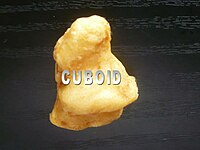Broken fish tank
A broken fish tank is just like an ordinary fish tank in most ways. It does, however, have one major defect: it doesn't hold water any more and thereby fails to fulfill its purpose (more on this later). This article sheds a little light on the differences and similarities between functional and broken (or dysfunctional) fish tanks.
We can probably cover most of the ways a fish tank can be dysfunctional, because fish tanks are comparably simple pieces of decorative furniture. You might have run into these defects yourself if you have been dealing with fish tanks a lot, but it is probably still worth your while to read the article through.
Please keep in mind that there are several different brands and models. You might have run across a fish tank brand we have never heard of. Despite the subtle differences between fish tank brands, most of them resemble each other quite enough to be broken in similar ways. In this respect, broken fish tanks are far easier to determine and analyze comprehensively than, for instance, Broken Vacuum Cleaners.
The function of a fish tank[edit | edit source]
The following is an outline of the intended function of an ordinary decorative fish tank for those who have never seen one.
An ordinary fish tank is just what the name implies to anyone with any common sense at all. In other words, it is a tank wherein you keep fish. The other name for a fish tank, incidentally, is an aquarium, which - if you have a rudimentary knowledge of Latin - should tell you that a fish tank contains water besides fish. A fish tank is most often made of glass and/or some plastic and/or metal parts to keep the glass parts together. Geometrically it is most often a polyhedron, and of all possible polyhedrons a cuboid.
- (Note: Bear in mind that due to slight but unavoidable inaccuracies in manufacturing techniques, no man-made polyhedron is ever completely exact. Geometry, in general, is just theoretical in any case. This might not be obvious to the naked eye, but there is no way around it: no matter how cleanly cuboid your fish tank might seem, on the subatomic level - and even above that - there will always be inaccuracies. This is true of any object, man-made or natural, and until it is proved that any kind of super-exact god exists, this will remain so. No need to despair over those invisible faults! Everyone else's fish tanks have them too!)
The fish in the fish tank should be alive and visible (unless hiding behind rocks, plants or other decorations the tank might contain). In other words: the walls of the tank should be made of transparent plastic or clear glass. The material should be kept clean enough to let through enough light so that the living fish inside the tank can be watched and admired. For advice on how to keep fish alive in a fish tank or otherwise, see HowTo:Keep fish alive. If the article doesn't exist, there is a fault within this encyclopedia.
Ways in which a fish tank can be broken[edit | edit source]
- Smashed to smithereens. This is a very usual way for a fish tank to be broken, for the state can result from explosions, violent automotive accidents, landslides, gun fights between rival gangs fighting for the fish, etc. In this case a fish tank has been blown to such small pieces that there is no reliable way to make certain if the object has actually been a fish tank or something else. In this case, there is also no imaginable way to save the fish if they were inside at the event. Also note that glass objects, when broken with necessary amount of force, are always smashed to smithereens.
- Pulverized. A fish tank can be pulverized by driving over it several times with a steamroller on a hard surface. Also in this case it is virtually impossible to even try to figure out a remedy. The tank is gone, the fish are dead. Keep in mind that if this method is attempted on anything softer than concrete, the glass of the tank will not be properly pulverized but instead will get pressed into the surface it was set on (asphalt, dirt, etc.). Also note that the metal parts of the tank, if there are any, will not be pulverized. If you feel a strong need to nitpick over that one, you are welcome to write your own article on how different pieces of fish tanks get mangled in different ways - depending on material - under steamrollers.
- Twisted into a knot. Since fish tanks are mostly made of glass, hard plastics and/or different metals, it is necessary to heat one up to several hundred degrees Celsius to twist it into a knot, and even then you will need some special tools - basically some heat resistant robotic arms. This will be very expensive. Therefore the chances of finding a fish tank broken in this manner are almost nil. It's not impossible, though.
- The fish are dead; no visible fault in the tank; it contains water or what looks like water. An inexperienced reader might think this is somehow the fish tank's fault. Not so! The owner of the tank has just probably forgotten to feed the fish, clean the tank, or change the water. There are a few other, more unlikely reasons as well. For instance, someone might have poured a package of salt into the tank. A poison can also be used, for instance battery acid. Whatever the cause for this aquatic catastrophe, the tank is not to blame as already stated. Most often the guilty party is our old friend, drug abuse.
- Contains neither fish nor water. Put some in and see if the tank looks more functional that way. If it does, it is not dysfunctional.
- There is a human head in the tank. The tank is probably hale if it still contains enough water to cover the head. If the tank is yours, you might do wisely to try and get rid of the head, unless you can remember what you have been doing lately.
Notes[edit | edit source]
- Before trying to determine whether your fish tank is broken, please read a reliable article on fish tanks. You can find approximately 27.000 000 articles on fish tanks if you do a Google search (Geargh for short).
- If you find yourself in possession of a fish tank in any of the previously listed states of disrepair, or otherwise damaged, you are strongly discouraged to attempt fixing it on your own. Not only are you an unqualified and idiotic consumer, but there are significant dangers associated with broken fish tanks, the most potent of which is a tendency for them to deactivate the owner in an accident where the owner drinks himself to a stupor and keeps his head under water until drowned.
- Sometimes fish tanks are initially broken on purpose. This can cause considerable confusion in the end user, and in fact a broken fish tank that was manufactured as such is not considered to be broken, but rather a brilliant work of decorative art. You can discern between these two by comparing prices: a broken fish tank can be bought for a few dollars and upwards, while a brilliant work of art never costs anything less than $10 000. If you are not yet certain based on the price difference, see if the broken tank has a signature on it anywhere (works of art always do). Place of purchase is also important. If you bought your broken fish tank in an art exhibition, modernism is not dead yet.



